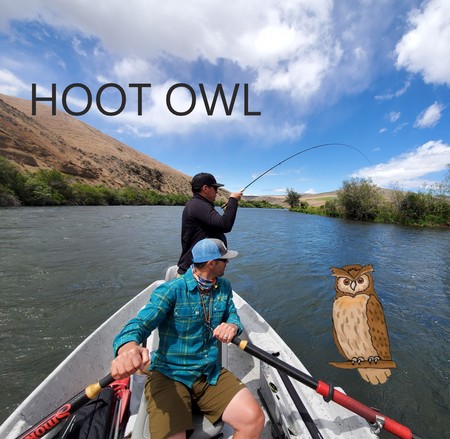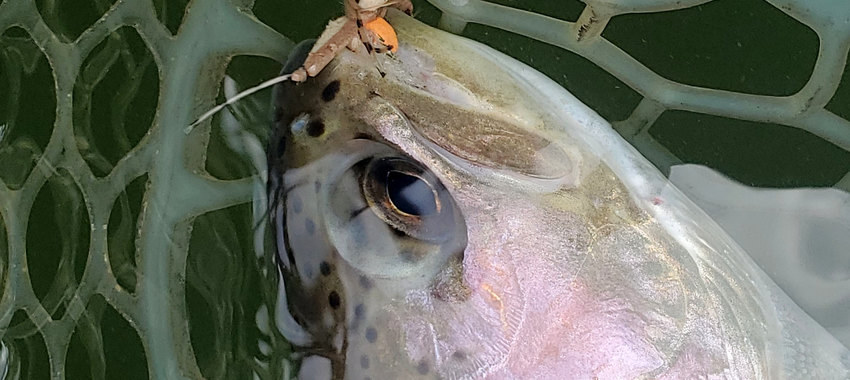Yakima River Report // Hoot Owl Hours for Our Guides
August 10, 2021
The fishing has been fabulous. Big swift water during the heat of summer is a unique blessing that the Yakima River posesses, and it flows like no other western river. It's at this point in the summer however that the reservoirs feeding the Yakima River begin to get lower, warm up a bit, and our water temperatures begin to hit 70 degrees in the afternoon. This is hard on trout.

Voluntarily our guide team is restricting our trips to what we call "Hoot Owl" hours. The term has origins in the logging industry, when fire danger is high loggers hit the woods in the dark in order to avoid running chain saws and other equipment during the heat of the day and possibly triggering a fire. Early start, early finish.
Our guides will be off the river by 2 pm in order to avoid catching fish during their most vulnerable time. We understand the impact this team has on the fishery, they are quite effective at finding trout. In addition, we'll be releasing all trout immediately, teaching our guests to land the fish quickly, using heavier tippets to aid in fighting the fish effectively, and simply trying to have great trips without focusing on catching high numbers of trout.
Tips for Helping Preserve Our Trout Population
A productive, healthy, and Blue Ribbon quality stream can be decimated in a single summer with high water temps and over fishing. We want to avoid that. Hoot Owl hours along aren't going to protect these trout. If you are fishing over the next few weeks, consider a few of these tips for helping minimize mortality on trout in warm water.
- Don't get greedy. If the fishing is productive, consider experimenting with unique flies or techniques that aren't "proven". Nobody needs to be using double-nymph rigs catching 30 trout per day when the water temps are pushing 70.
- Use low rod angles with very little bend in the rod to fight the fish. Most anglers aren't aggressive enough and it might feel like you are pulling hard... but you're not. Keep the rod tip oriented toward the fish and fight the trout aggressively to minimize stress.
- Use heavy tippet. You can land fish faster and the trout less likely to get tangled in 2X vs. 4X if you net them.
- Use single fly setups. Double fly rigs take more time to unhook, and netting fish with 2 fly rigs increases handling time.
- Stick with dry flies. Do everything you can to fish exclusively dry flies. Trout are typically easier to release, come un hooked better, and frankly you get more "bang for your buck" if a fish strikes a dry fly you get enjoyment even if you don't hook that fish.
- Net and wet. Keep the trout in the water breathing while you unhook it. Be sure the trout's gills are pinched shut while it lays in the net, and submerse the net enough to create a small livewell.
- Cut the fly off. If a trout is hooked deep, consider immediately just cutting the fly off and releasing the fish. Extended handling is typically more harmful to the trout than leaving a fly in its mouth.
- Fish early. Get out at dawn, fish till mid-morning and call it a day.
- Go Bass fishing.
- Use a Ketchum Release Tool
-
I really appreciate Red's doing this voluntarily and educating all of us about taking care of the trout. These are all wild fish and there is no truck coming to replace the ones that we kill by overfishing and careless handling. I also love the Ketchum Release Tool and wouldn't be happy fishing without one. If you don't have to net or handle the fish at all, it is that much better. Thanks again for making this an important part of your program. Cheers, Mike
-
What fishing dates available for guided trip on Yakima left in august
-
Class Act. Setting the correct tone and example to help preserve our fisheries.
![Reds Fly Shop [logo]](/img/reds-fly-shop/logo.png)
